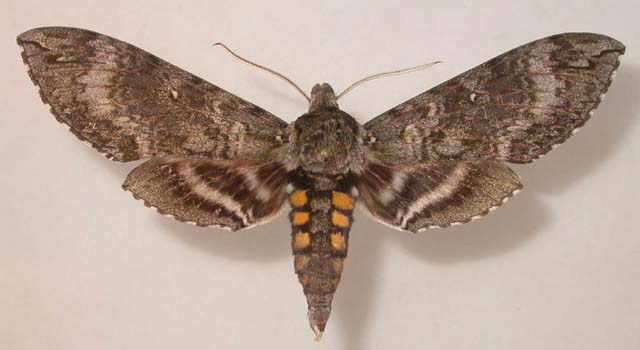Ian Kitching writes, "At present (October 2007), the subspecies
situation in Manduca diffissa is rather confused. If we accept
the current distributions, then you shouldn't catch the darker
M. d. petuniae in Argentina, as it is only supposed to occur
as far south as Mato Grosso and Goias in Brazil.
"In SE Brazil, Paraguay and presumably the Iguazu area (Argentina), it is
M. d. tropicalis. Further west, in Salta and
Tucuman (Argentina), it is M. d. mesosa (smaller and paler than
tropicalis), and
further south in Uruguay, and Buenos Aires (Argentina), it is the smaller and
greyer M. d. diffissa.
"I suspect that of these, only the latter is
distinct from all the former.
"Further north, there are other
problems, as there is M. d. zischkai, a high elevation
subspecies in Bolivia, and in east Ecuador, M. d. petuniae
becomes difficult to separate from Manduca mossi in some
places at high elevation.
"Maybe DNA barcoding will give us an idea as to where to start
sorting this group out.
"Distinguishing the subspecies of diffissa is very tricky as it all
comes down to colour, which even Rothschild and Jordan admitted was
variable. Manduca diffissa petuniae is a paler brown moth in
general, while Manduca diffissa tropicalis is darker, less
yellowish, but these features seem to show some overlap.
M. mesosa is said to be intermediate and so I am not sure I would
accept any of tropicalis, mesosa or petuniae as separate subspecies,
but I'll wait to see what DNA barcoding says."
